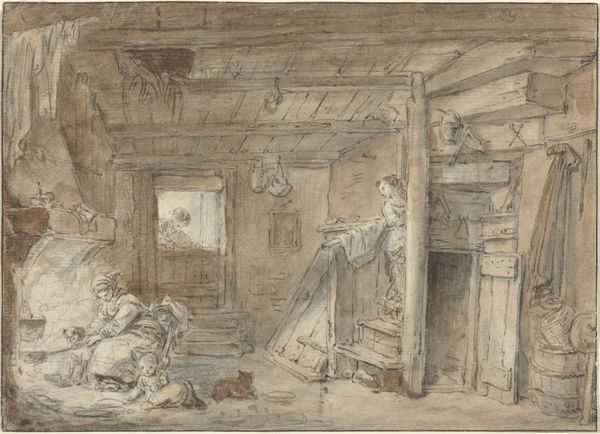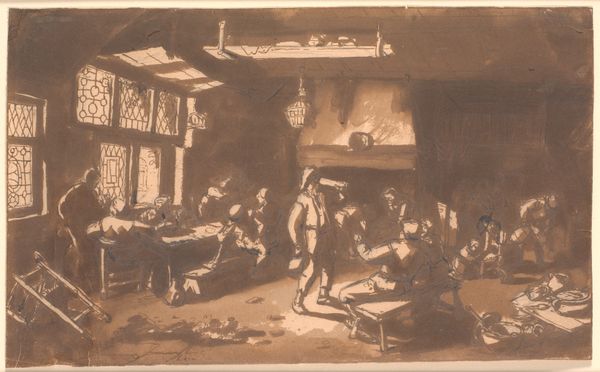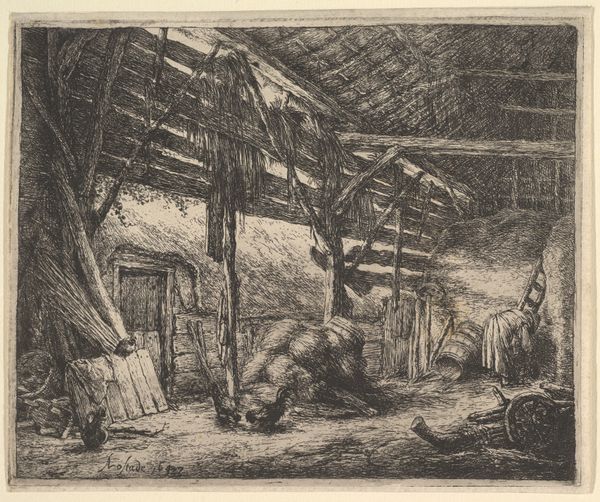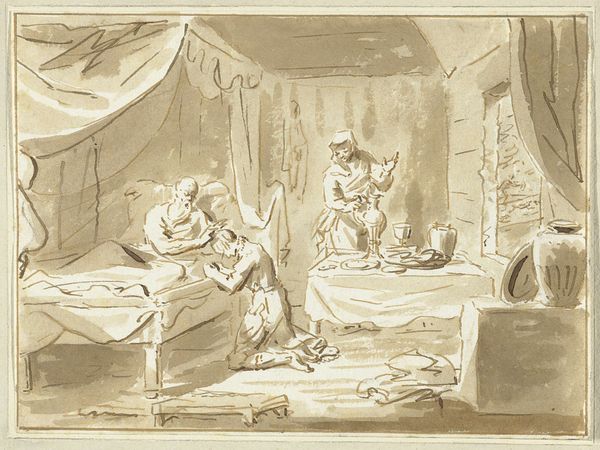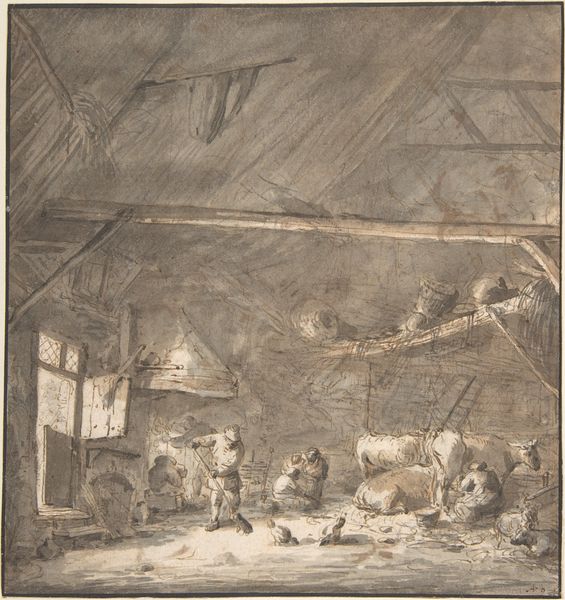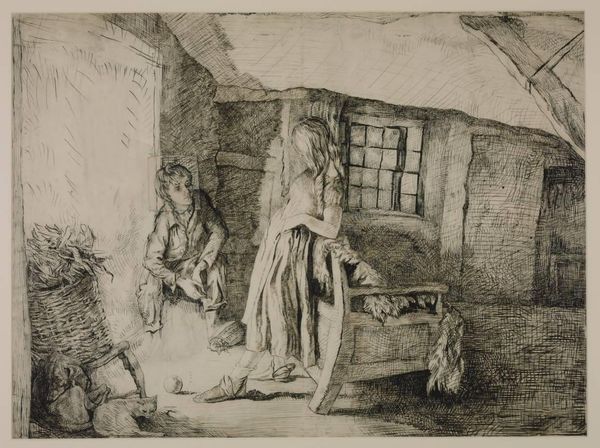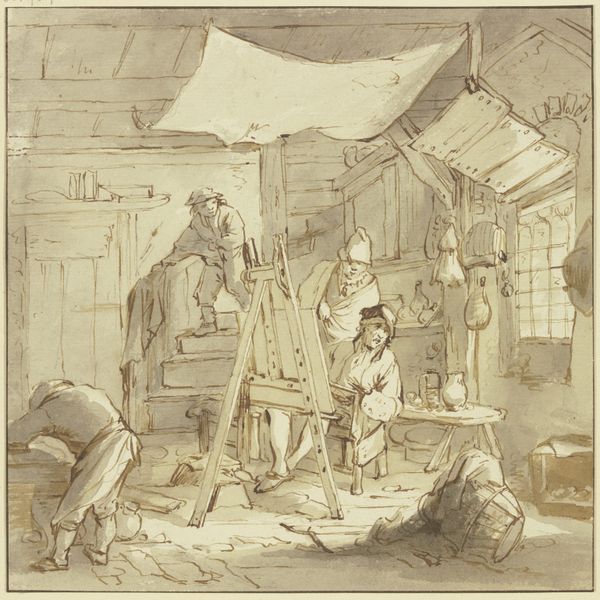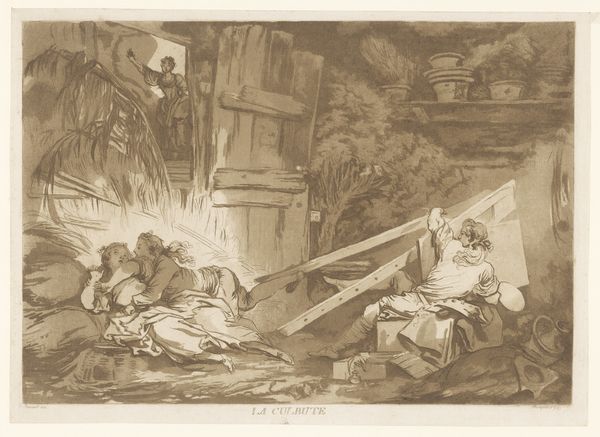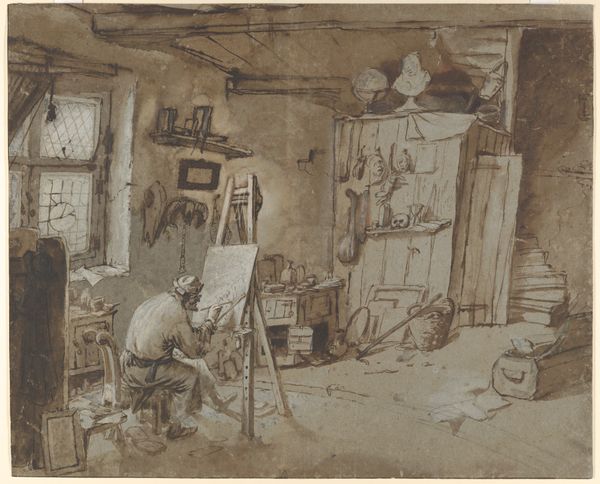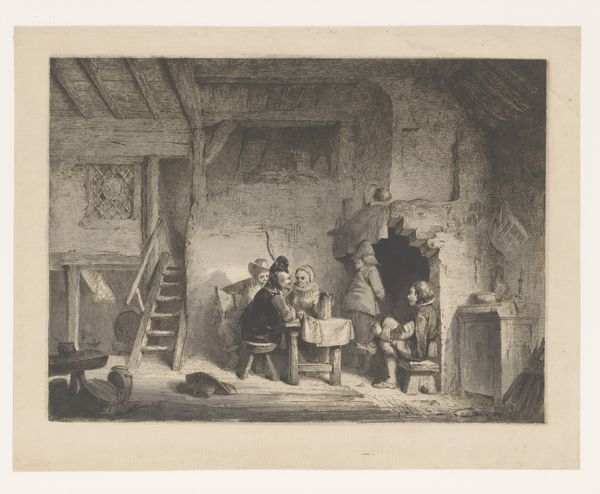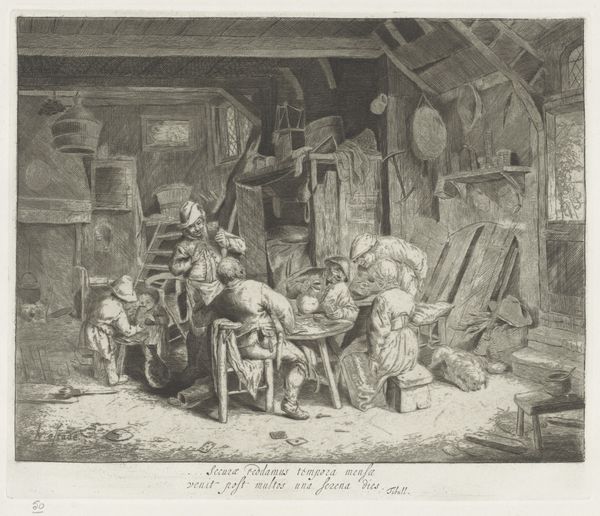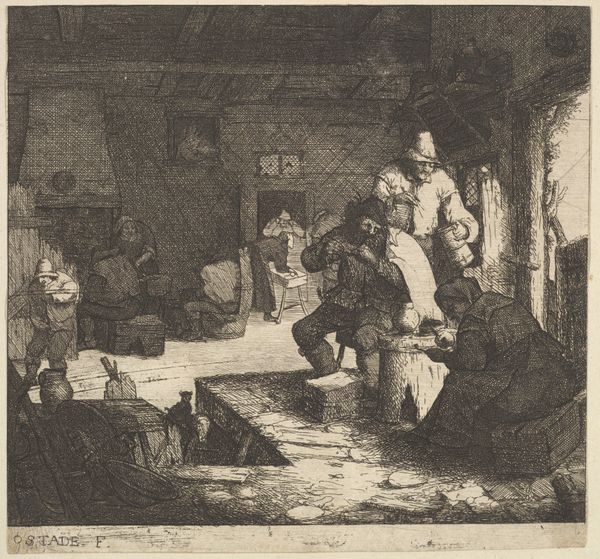
drawing, ink, pen
#
drawing
#
narrative-art
#
figuration
#
ink
#
romanticism
#
pen
#
genre-painting
#
history-painting
#
watercolor
Dimensions: 331 mm (height) x 412 mm (width) (bladmaal)
Wilhelm Marstrand created this drawing, "The Return of the Motherless," around 1838. It depicts the social realities of 19th-century Denmark, portraying a family struck by tragedy, likely set in a rural community where hardship was commonplace. The scene unfolds in a humble dwelling where poverty is evident. A man, presumably the father, returns with his tools, suggesting he is a farmer or laborer. Meanwhile, a group of children cluster near their deceased mother, who lies in bed. The image’s emotional weight is palpable. Marstrand uses the visual codes of sentimentalism to elicit empathy from the viewer, tapping into contemporary concerns about social welfare and family values. To fully grasp the meaning of this work, one can consult demographic records, historical accounts of rural life, and studies of Danish cultural attitudes towards death and mourning during the period. This allows us to interpret the art as a reflection of its time and its place.
Comments
No comments
Be the first to comment and join the conversation on the ultimate creative platform.

